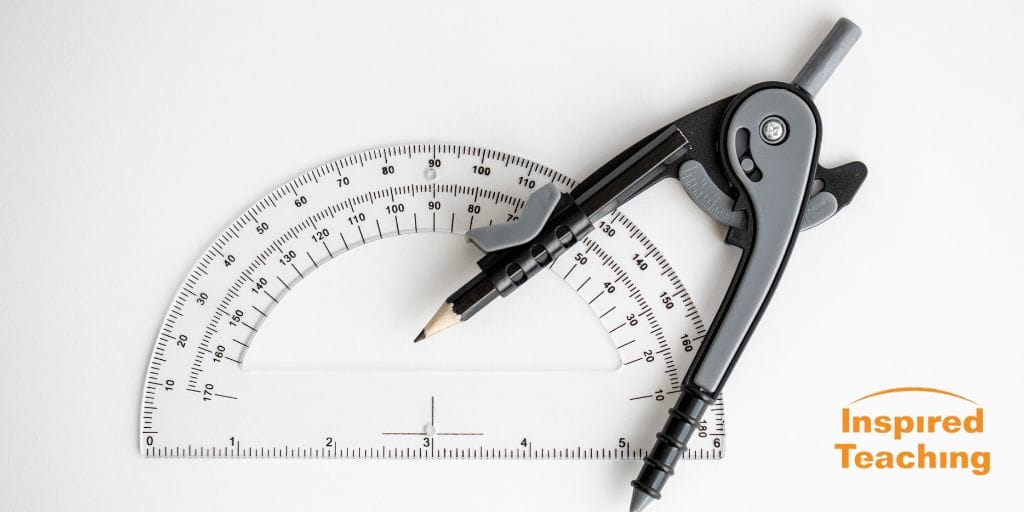The following activity is part of a series we’re creating to support students, teachers, and caregivers, during this unprecedented time. Read more about the project here. If you try this activity with your student(s), we’d love to see what you do. Share your journey via the #Inspired2Learn hashtag on your preferred social platform.
Created by: Aleta Margolis
Discipline: math, and also writing, science, and more
Age level: any
Time: a few minutes to as long as you want
Materials: many activities don’t require any materials; some require things like pencil and paper, compass, protractor, drawing materials, dice, or playing cards
What to do:
Be sure to check out our previous post 25 Math Explorations.
The intent for these ideas is to have the learners do them. The teacher or parent sets the stage and asks the questions, but it is the students who undertake the explorations, and figure out the mathematical concepts. If things go well, they will generate more questions as they engage in the activities. If learners can find answers – on their own, in (virtual!) conversation with friends, or with an adult’s help – that’s great. If not, that’s great too! Giving the brain something to puzzle through is good mental exercise anytime, especially now when our learners’ brains might be beginning to miss the daily stimulation of a face-to-face classroom.
Some ideas are more appropriate for young children, some for older students. But all can be adapted to fit any age group. So, adapt away!
And now…the list!
- Figure out the area of your bedroom.
- Figure out the perimeter of your bedroom.
- Figure out the surface area of your bedroom.
- Figure out the volume of your bedroom.
- Figure out how much money you’ll owe one year from now if you continue to pay the minimum balance on a credit card with $100 of debt.
- Analyze the stats of your favorite baseball/basketball/football player.
- Go outside with a compass, a pencil, and a piece of paper and see what happens.
- Look at car advertisements online. Figure out if it’s a better deal to buy or lease.
- Figure out how much you’d have to work a job (how many hours for how many weeks) paying minimum wage in order to save enough money to buy the car of your choice.
- Figure out how long it would take to drive to Miami, FL (or anywhere you want to go) if you were driving 65 mph; 75 mph. Calculate with stops and without.
- Determine how many different phone numbers could exist in the US, assuming there were no limits on area codes or number combinations.
- Calculate the amount of time you sleep each year.
- Compare the amount of time you are awake each year to the amount of time you are asleep.
- Determine how many words you read per minute. Calculate how long it would take you to read a 50 page book, 100 page book, etc.
- Calculate how long it would take to fly around the world at 250 mph if you were flying along the equator.
- How old will you be in the year 2050? 2100? 2500?
- How many steps do you take between the front door of your home and your kitchen, bedroom, etc? Use that number to calculate how far you walk along that path in a month….in a year.
- Take your pulse. Determine how many times (on average) your heart beats in an hour….in a day…in a month…in a year. (Check out this #Inspired2Learn activity for more things you can explore about your pulse.)
- How many times do you blink in a minute. Determine how many times you blink in an hour…in a day…in a month…in a year.
- Draw a picture to prove that 1/4 x 1/5 = 1/20.
- Time yourself to see how long you can stand on one foot. Now try the other foot. Did you get the same answer both times?
- Try the exercise above with your eyes closed. How do closed eyes affect your time? Why?
- Do five push-ups today. Do six tomorrow. Do seven the next day. If you keep going at this rate, how many will you be able to do one week from now? One month from now? Bonus: measure the circumference of your biceps/triceps (upper arm muscles) on Day 1, Day 5, etc. and notice how it changes.
- See how high you can count out loud in one minute. In five minutes.
- Write down ten ways you can use math in everyday life. Share your list with 10 friends, and you’ll have 100 more ideas!
Inspired Teaching connection:
Because these exercises come in the form of ideas, not fully articulated lessons, it’s up to the students to figure out how to execute them. Students get to decide which activities to try, how long to spend on each activity, how and whether to extend their learning, and more. These activities place the learner in the driver’s seat, in line with Inspired Teaching’s Core Element Student As Expert. The activities further engage students in the Wonder-Experiment-Learn Cycle, as they estimate the height of a tree, predict the likelihood of drawing a green marble (or eating a green M&M), or create symmetry with the furniture in their living room.
See our instructional model here.

